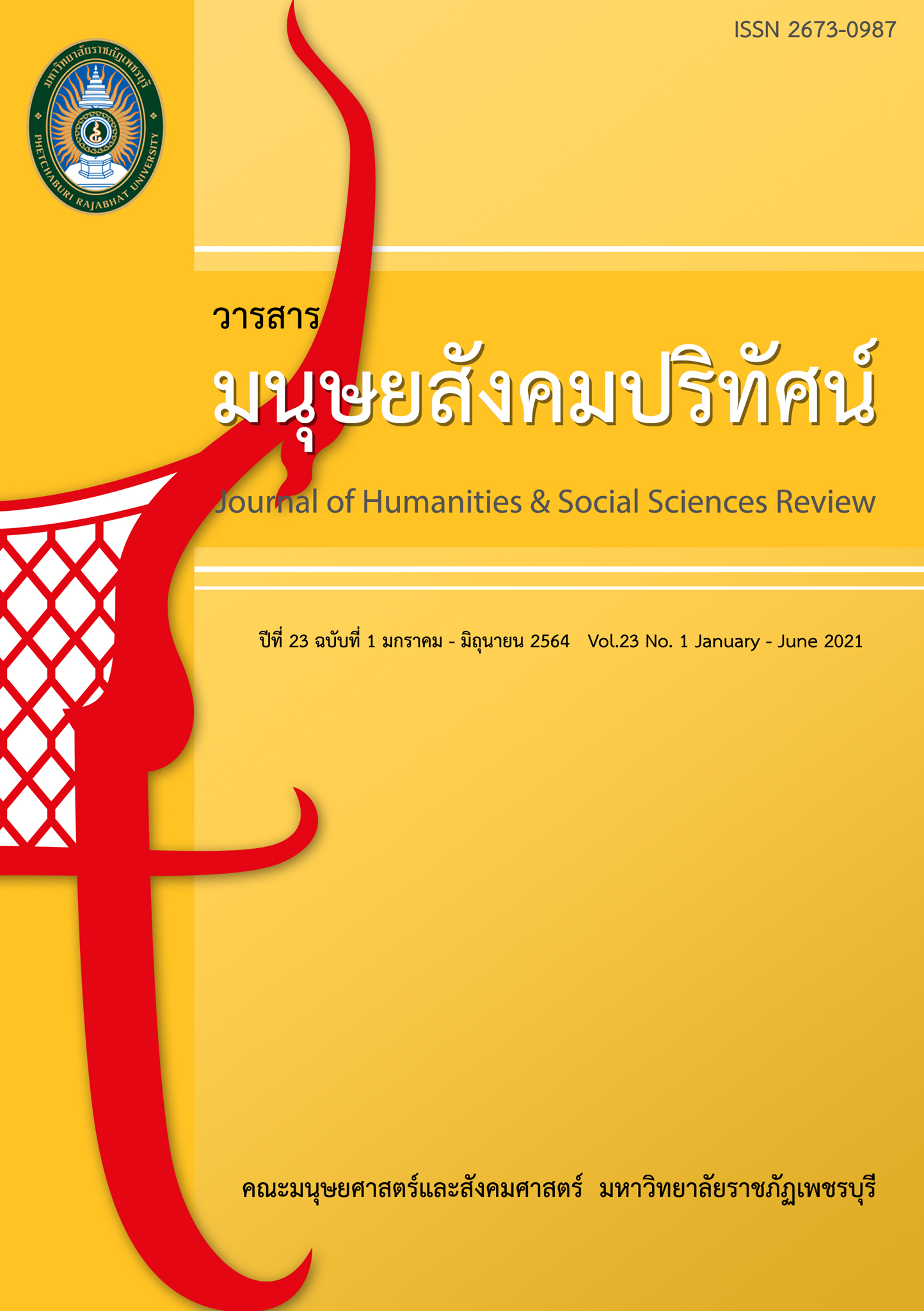Making a SUENG of Old Wood to Improve the Quality of Lanna Musical Instruments
Main Article Content
Abstract
The purpose of this research was to study the making of Sueng and its characteristics, Thai northern stringed musical instrument and the of stringed instrument made of old wood, in order to improve the quality of the musical instrument, which made from old wood, to be widely accepted. The researcher conducted this study using qualitative research methodology according to the Ethnomusicology guidelines. The data were collected by interviews and participatory observation on the process of making Sueng of old wood by Sopin Piensin, the local wisdom teacher and the folk musical instrument maker in Terng district, Chiang Rai province. 10 folk music experts were tested to check the physical characteristics and tone quality with sound program. The results were found that Sueng that made of old teak wood from furniture, door panel, or window panel assembled together piece by piece instead of using carving technique as a traditional method. Sueng’s frets were modified with a brass stringstick which was similar to a guitar’s frets. Sueng had a shape like a paddle with a proper weight. However, the problem was all sizes of Sueng had similar sound characteristics which lacked of tone color that was unique to each size. Nevertheless, the Sueng that made of old wood could save a lot of trees and the old wood could be found as a material for making musical instruments more easily, which was another factor that helped to carry on and spread the wisdom of indigenous musical instrument making and it was a guideline to develop the quality of Lanna musical instrument from local wisdom craftsmen.
Article Details
1. Any views and comments in the article are the authors’ views. The editorial board has not to agree with those views and it is not considered as the editorial board’s responsibility. In case, there is any lawsuit about copyright infringement, it is considered as the authors’ sole responsibility.
2. The article copyright belonging to Faculty of Humanities and Social Sciences, Phetchaburi Rajabhat University are copyrighted legally. Republication must be received direct permission from the authors and Phetchaburi Rajabhat University in written form.
References
2. เกษตรพันธุ์ 9. (2562). สาระสำคัญ พ.ร.บ.ป่าไม้ปี 2562: ปลูกได้ ตัดได้ แต่ไม่ง่ายอย่างคิด. สืบค้นเมื่อ 29 มิถุนายน 2563, จาก https://www.kaset1009.com/th.
3. ปรเมศวร์ สรรพศรี. (2555). เจ้าสุนทร ณ เชียงใหม่: การสืบทอดภูมิปัญญาการสร้างสะล้อและซึง. วิทยานิพนธ์ปริญญาศิลปศาสตรมหาบัณฑิต สาขาวิชาวัฒนธรรมและการพัฒนา มหาวิทยาลัยมหิดล.
4. เมธี พันธุ์วราทร. (2558). การใช้วัสดุทางเลือก “ไฟเบอร์กลาส”: กรณีศึกษากรรมวิธีการผลิตและคุณภาพของกะโหลกซออู้. วารสารสถาบันวัฒนธรรมและศิลปะ, 16(2): 18 - 23.
5. ศุภกร เจริญสุขประภา. (2555).การเลือกใช้วัสดุทดแทนในการสร้างเครื่องดนตรีไทยของอาจารย์มานพ แก้วบูชา: กรณีศึกษารางระนาดเอกไฟเบอร์กลาส. วิทยานิพนธ์ศิลปกรรมศาสตรมหาบัณฑิตสาขาวิชามานุษยดุริยางควิทยา บัณฑิตวิทยาลัย มหาวิทยาลัยศรีนครินทรวิโรฒ.
6. สงกรานต์ สมจันทร์. (2561). ข้อสรุปจากงานเครื่องดนตรีวิทยา: ไม้ที่ใช้สร้างเครื่องดนตรีล้านนา. สืบค้นเมื่อ 10 มกราคม 2563, จาก https://www.facebook.com/songkrancmru/posts/2055433901169765.
7. สุคำ แก้วศรี. (2553). สะล้อและซึง: ภูมิปัญญาดนตรีพื้นบ้านล้านนา. วิทยานิพนธ์ศิลปศาสตรมหาบัณฑิต สาขาวิชาวัฒนธรรมศึกษา บัณฑิตวิทยาลัย มหาวิทยาลัยแม่ฟ้าหลวง.
8. สุคำ แก้วศรี. (2563). สัมภาษณ์. 22 มิถุนายน 2563.
9. สำนักงานมาตรฐานผลิตภัณฑ์อุตสาหกรรม. (2559). มาตรฐานผลิตภัณฑ์ชุมชน: ซึง. กรุงเทพฯ: กระทรวงอุตสาหกรรม.
10.สำนักส่งเสริมการปลูกป่า. (2553). สัก. กรุงเทพฯ: กรมป่าไม้.
11.เอกพิชัย สอนศรี. (2546). ซึงในวัฒนธรรมดนตรี จังหวัดเชียงใหม่. วิทยานิพนธ์ศิลปศาสตรมหาบัณฑิต สาขาวิชาดนตรี บัณฑิตวิทยาลัย มหาวิทยาลัยมหิดล.
12. Nypaver, A. (2015). Tone color in music: Definition & explanation. Retrieved April 12, 2021, from https://study.com/academy/lesson/tone-color-in-music-definition-lesson-quiz.html.
13.Walker, L. (2020). Audio spectrum. Retrieved April 12, 2021, from https://www.teachmeaudio. com/mixing/techniques/audio-spectrum.


